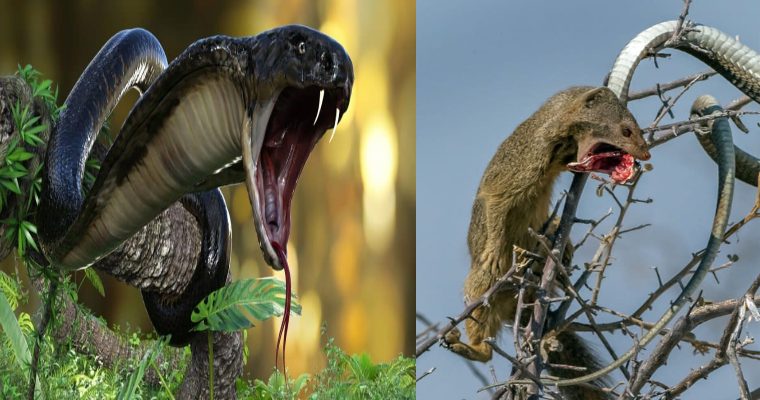HOW ARE KITES DIFFERENT FROM HAWKS AND FALCONS?
Kites, falcons and hawks are all birds of prey that share many similarities. While these many not hold true for every specific species, here are some general differences between these three types of birds:
- Wing Shape: Kites have long, pointed wings that are designed for soaring and gliding. Hawks have shorter, broader wings that are designed for quick, agile flight. Falcons also have longer, pointed wings but are mainly designed for speed.
- Hunting Style: Kites are often opportunistic hunters and feed on a variety of prey, including small mammals, birds, reptiles, and insects. They typically hunt by soaring and scanning the ground for prey. Hawks, on the other hand, are more specialized hunters and tend to focus on a specific type of prey, such as rodents, birds, or insects. They typically hunt by perching and waiting for prey to come within range. Falcons are known for their high-speed dives to catch their prey and are much faster moving than kites.
- Behavior: Kites are known for their graceful flight and their ability to soar effortlessly for long periods of time. Overall they spend much more time soaring than hawks and falcons. But, they have less agility when it comes to tight maneuvers.
8 SPECIES OF KITES IN NORTH AMERICA
1. MISSISSIPPI KITE

Mississippi kites are the most widespread species of kite in North America. They like to breed along the Mississippi River as far north as Iowa. Look for them in the U.S. during the summer in the southeast states in large, wooded wetland, and the prairies of Texas and Oklahoma. A small pocket of Mississippi kites live in Arizona too. Come fall, they will migrate down to central parts of South America to spend the winter.
East of the Mississippi River they nest in large tracks of mature forest that have open land nearby, such as pastures, waterways or lakes. West of the Mississippi their nesting sites can be found in oak and mesquite savannah and trees lining rivers. More recently they have taken to nesting in urban areas like parks and golf courses. These social birds don’t mind nesting close to each other, but will aggressively defend their nests from any other threats including humans. Western birds tend to nest in groups more than eastern ones.
Their coloration is mix of light and dark grays. They have a pale head and chest, a dark eye patch, and dark wings and tail. Their body shape is slender, and in flight they narrow, pointed wings.
Depending on where they live they eat quite a wide variety. They tend to grab prey while in flight, either snatching large insects from the air or plucking frogs, lizards and snakes from plants. Occasionally they will forage on the ground or in shallow water.
2. DOUBLE-TOOTHED KITE

Scientific name: Harpagus bidentatus
Double-toothed kites are non-migratory raptors that live from northern South America, through Central America to Mexico. Rarely, they have been spotted in Texas. The Double-toothed Kite has a dark head, back, wings and tail. Their throat is pale and their chest and belly are cream barred with rusty red. Their name comes from their distinctive hooked beak with two sharp, curved “teeth” on the upper mandible. It has a relatively short tail and long, pointed wings, which it uses to maneuver through the forest canopy as it hunts for prey.
They rely on branches and foliage to keep them camouflaged from prey while they hunt. Small lizards, mice, and insects are on the menu. To catch its next meal, a double-toothed kite perches motionless on a branch. It surveys the surrounding leaves and branches for prey, then strikes. They also fly low over the forest canopy to snatch prey from foliage, a different hunting style than many other birds of prey that swoop down from higher up.
Double-toothed kites may grow rarer because of habitat fragmentation. They prefer to stay in the interior of forests. When roads are cleared through the jungle, it means the birds have to travel deeper into the jungle to find the right place to live.
3. PLUMBEOUS KITE

Scientific name: Ictinia plumbea
The Plumbeous Kite just barely makes it into our North American list, with the northern end of its range being in southern Mexico. Some breed in Central America and Mexico, while most remain year-round in South America. They are in-flight diners that don’t stop to snack, snatching insects out of the air and eating while still flying.
Plumbeous kites are so-named because of their dark gray coloration. Plumbeous is a term used to describe something having a dull gray, lead-like color. But they do show a pop of color, in flight you can see a deep red top along the ends of the wings, along with their orange feet.
Their red wing color really pops when light shines through it, similar to stained glass. Their iris is a similar red color.
The migrating population may flock together during travel, but otherwise they are not particularly social with each other. They nest in a manner similar to other kites: a nest in a tall tree or snag standing in a swamp or marsh. Both parents cooperate to incubate, feed, and raise the chicks, which takes about two months in total.
4. SWALLOW-TAILED KITE

Scientific name: Elanoides forficatus
The Swallow-tailed kite is a resident in much of South America, but some do travel north to spend the breeding season in Central America, Florida, and areas along the Gulf coast and southern Atlantic coast. Nesting pairs mate and raise chicks in undisturbed areas along the coasts, especially wetlands with tall trees.
This bird is known for being one of the most graceful-flying birds on earth. It has strong shoulder muscles which enable it to complete complex arial acrobatics as well as glide during migrations. Some migratory swallow-tailed kites have flown for over 10,000 mile-long trips.
They show a lot of pure white on their underside, framed by black around the edge of their wings and a deeply forked tail. Their whole head is white, but their back and the top-side of their wings are dark.
Flying insects make up a lot of their diet, but they also supplement with tree frogs, lizards, baby birds and snakes. They hunt on-the-wing, grabbing prey while on the go. In fact they spend most of their time flying, both catching and swallowing food while still in flight. They are excellent at soaring and making quick turns without having to use a lot of wingbeats.
5. WHITE-TAILED KITE

Scientific name: Elanus leucurus
White-tailed kites are small, pearly gray and white raptors with striking red eyes. Their wings and back are light gray, with a darker gray patch on the “shoulder” area. These kites have a wide distribution in South America and Mexico, but can also be found in the U.S. along the Pacific coast, the southern tip of Florida and the Gulf coast of Texas. They are mainly non-migratory.
White-tailed kites prefer to reside in open grasslands where they can glide overhead. The unobstructed view lets them zero in on mice and voles. They grab prey feet-first, not with their beaks.
Some also eat lizards and insects when the opportunity arises. This bird is most active at dawn and dusk, which are times many small rodents are out and about.
If you live its habitat range, you may be able to spot a nest. Both parents pick a tall tree, which is usually at the edge of a forest or standing alone. During the non-breeding season large flocks of them are known to gather together and roost in a few trees along the edge of grassland or savanna.
6. HOOK-BILLED KITE

Scientific name: Chondrohierax unciatus
Of all the kites native to North America, the Hook-billed kite has the largest bill, which is almost parrotlike in appearance. Their upper bill is heavily curved into a long hook-shape. Males have dark gray upperparts with a barred white and gray body, while females have white and reddish-brown barring. They have a pale eye and yellow spot in front of each eye.
Most of their diet consists of tree snails, which their bill is specially adapted to break open. They rely on trees and thick foliage to support snail populations, so they stick to areas of lowland rainforest and wooded streams. To follow snail populations they may move around nomadically within a local area.
Most of the population lives in South America, but a substantial portion lives in Central America and southern Mexico. They prefer the coasts and jungles to arid interior landscapes. In the United States, they occasionally venture north into the Rio Grande Valley of Texas.
7. SNAIL KITE

Scientific name: Rostrhamus sociabilis
The Snail kite cuts an intimidating figure, thanks to its black feathers, sharp, precise bill, and piercing red eyes. Males are dark all over, while females are brown with white streaking around the face, and juveniles have brown above and heavy white and brown streaking below.
Like other South American kites, parts of the population don’t limit themselves to the southern hemisphere. Snail kites live in Central America and in many Caribbean islands. Central and Southern Florida are home to these birds as well.
This bird shares its primary food source, apple snails, with one other bird – the Limpkin. Even though they compete for the same food, there isn’t often fighting, although the Snail kite may occasionally steal from the Limpkin.
These kites hunt visually, so in areas where the water is too cloudy or vegetation covers too much of the surface, you probably won’t find them because they won’t be able to see the snails well enough to catch them. They look for snails while perching or flying low over the water. Grabbing the snails with their feet, they carry the snail to a perch where they can use their bill to extract the snail body from the shell.
You may be able to spot a Snail kite if you live in Florida, but they are very affected by the presence of apple snails. They may be abundant in a region with many snails one year and then absent the next if there are no snails.
8. GRAY-HEADED KITE

Scientific name: Leptodon cayanensis
The Gray-headed Kite is found in eastern Mexico, Central and South America. Adults have a gray head, white body, black wings and back, and a black tail with a few white bars. It has a relatively short tail and long, pointed wings, which it uses to maneuver through the forest canopy as it hunts for prey. The Gray-headed Kite is a social bird that is often found in groups of up to six individuals.
The Gray-headed Kite likes to feed in the tree canopy. They eat insects, bees, birds and bird eggs, small snakes, arboreal geckos, and tree frogs. is an opportunistic hunter that feeds on a variety of prey, including insects, small mammals, birds, and reptiles. They have been observed perching near groups of arboreal mammals like marmosets, waiting for them to flush katydids and cicadas from trees.








